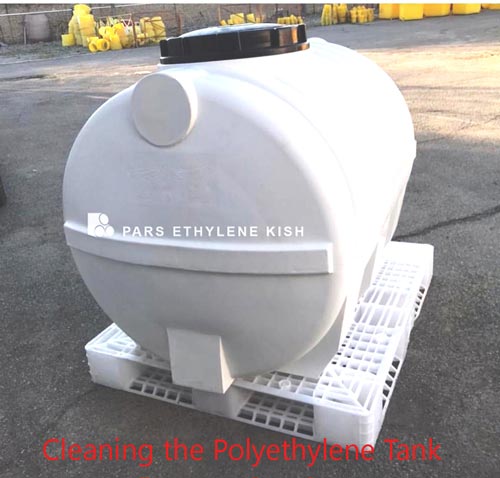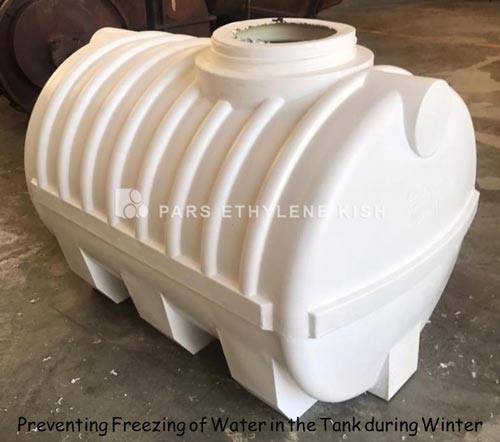Maintenance of Polyethylene Tanks: Ensuring Longevity and Water Quality
Table of Contents:
-
Introduction
-
Cleaning the Polyethylene Tank
-
How to Wash Polyethylene Tanks When Access is Limited
-
Disinfection of Polyethylene Tanks
-
Preventing Algae Growth in Polyethylene Tanks
-
Preventing Freezing of Water in the Tank during Winter
-
Conclusion
1. Introduction
Polyethylene tanks are widely used for storing water in various industries, agriculture, and residential settings. These tanks offer numerous advantages, including durability, cost-effectiveness, and resistance to corrosion. However, to ensure the longevity of these tanks and maintain the quality of stored water, regular maintenance is crucial. This article will guide you through the essential maintenance practices for polyethylene tanks, including cleaning, disinfection, preventing algae growth, and protecting against freezing.
2. Cleaning the Polyethylene Tank
Regular cleaning is vital to remove sediment, debris, and potential contaminants from the tank. Here are the steps to effectively clean a polyethylene tank:
-
Empty the Tank: Start by completely emptying the tank of its contents. Ensure there is no residual water left inside.
-
Scrub the Interior: Use a long-handled brush or sponge and a mild detergent solution to scrub the interior walls and bottom of the tank. Pay extra attention to areas with visible stains or buildup.
-
Rinse Thoroughly: After scrubbing, rinse the tank thoroughly with clean water. Ensure all traces of detergent are removed to avoid any negative impact on water quality.
-
Dry the Tank: Allow the tank to dry completely before refilling it. This step prevents the growth of bacteria or mold caused by moisture.

3. How to Wash Polyethylene Tanks When Access is Limited
In some cases, accessing the interior of a polyethylene tank for cleaning might be challenging. In such situations, alternative methods can be employed to ensure cleanliness:
-
High-Pressure Water Cleaning: Utilize a high-pressure water jet or power washer to clean the interior walls of the tank. The force of the water can help dislodge dirt and debris. Be cautious not to damage the tank's surface with excessive pressure.
-
Tank Cleaning Services: Consider hiring professional tank cleaning services equipped with specialized tools and expertise to clean polyethylene tanks effectively. These services can handle tanks of varying sizes and designs.
4. Disinfection of Polyethylene Tanks
Disinfection is a critical step in maintaining water quality and preventing the growth of harmful microorganisms. Follow these guidelines for disinfecting polyethylene tanks:
-
Empty and Clean: Before disinfection, ensure the tank is empty and properly cleaned using the methods mentioned earlier.
-
Select a Suitable Disinfectant: Choose a disinfectant approved for potable water use and compatible with polyethylene. Common disinfectants include chlorine-based solutions or hydrogen peroxide. Follow the manufacturer's instructions for proper dilution ratios.
-
Apply the Disinfectant: Thoroughly distribute the disinfectant solution throughout the tank, ensuring all surfaces come into contact with the solution. Use a sprayer, sponge, or other appropriate methods to achieve uniform coverage.
-
Contact Time: Allow the disinfectant to remain in contact with the tank's surfaces for the recommended contact time specified by the disinfectant manufacturer.
-
Rinse and Refill: After the contact time, thoroughly rinse the tank with clean water to remove any residual disinfectant. Refill the tank with fresh, potable water.
5. Preventing Algae Growth in Polyethylene Tanks
Algae growth can lead to foul odors, discoloration, and deterioration of water quality. Implement these preventive measures to inhibit algae growth in polyethylene tanks:
-
Sunlight Blockage: Since algae thrive in the presence of sunlight, position the tank in a shaded area or use a UV-resistant cover to minimize sunlight exposure.
-
Regular Inspections: Conduct regular inspections to identify any cracks or openings in the tank that may allow sunlight penetration. Seal any such openings promptly.
-
Regular Cleaning: Remove any visible algae growth from the tank's walls using a brush or sponge. Promptly clean any organic matter, such as leaves or twigs, that may accumulate on the tank's surface.
-
Water Treatment: Consider using algaecides or water treatment additives approved for polyethylene tanks. These products help prevent algae growth and maintain water quality.
6. Preventing Freezing of Water in the Tank during Winter
In colder climates, the freezing of water in polyethylene tanks can cause significant damage. Follow these measures to prevent freezing:
-
Insulation: Insulate the tank using materials such as foam or fiberglass. Ensure the insulation covers the entire tank, including the lid or access points.
-
Tank Heaters or Heat Tape: Install a tank heater or heat tape to keep the water temperature above freezing. Choose a heater or tape suitable for your tank's capacity and the severity of winter temperatures in your area.
-
Regular Inspections: Regularly inspect the tank for any signs of damage, cracks, or leaks that could compromise its insulation or heating system. Repair or replace damaged components promptly.
-
Water Circulation: Consider installing a water circulation system in the tank to prevent stagnant water, which is more prone to freezing. Circulation can be achieved through pumps or agitation devices.

7. Conclusion
Proper maintenance of polyethylene tanks is essential for their longevity and the preservation of water quality. Regular cleaning, disinfection, prevention of algae growth, and protection against freezing are key factors in ensuring optimal performance. By following the guidelines outlined in this article, you can maintain a clean and functional polyethylene tank, providing safe and reliable water storage for various applications.